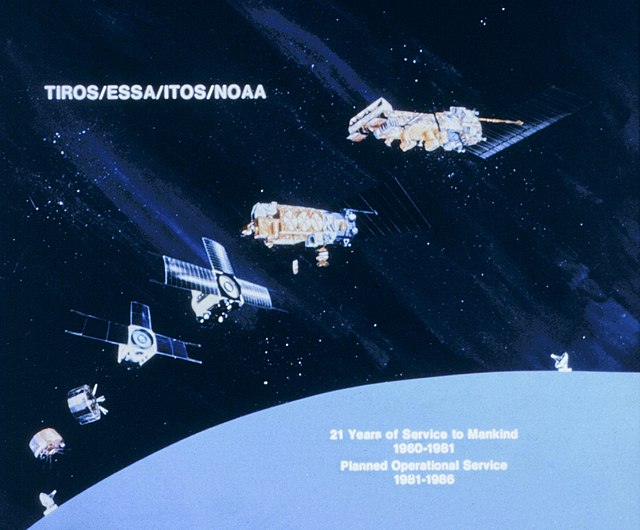Television Infrared Observation Satellite
Television InfraRed Observation Satellite (TIROS) is a series of early weather satellites launched by the United States, beginning with TIROS-1 in 1960. TIROS was the first satellite that was capable of remote sensing of the Earth, enabling scientists to view the Earth from a new perspective: space. The program, promoted by Harry Wexler, proved the usefulness of satellite weather observation, at a time when military reconnaissance satellites were secretly in development or use. TIROS demonstrated at that time that "the key to genius is often simplicity". TIROS is an acronym of "Television InfraRed Observation Satellite" and is also the plural of "tiro" which means "a young soldier, a beginner".
TIROS 6 satellite
William G. Stroud displaying TIROS-I's circuitry to Lyndon B. Johnson on 4 April 1960.
Diagram showing progression of meteorological satellites from TIROS I to TIROS-N
Graphic of the operational life of various satellites of the TIROS-N design
TIROS-1 was the first full-scale weather satellite, the first of a series of Television Infrared Observation Satellites (TIROS) placed in low Earth orbit.
The TIROS-1 prototype on display at the Smithsonian National Air and Space Museum.
The TIROS-1 magnetic tape data recorder.
TIROS I image showing a cyclone in South Atlantic, taken on April 28, 1960







